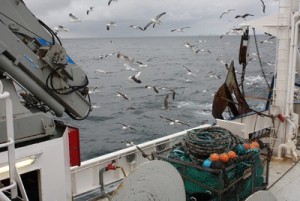
Sediment cores reveal historic hypoxia in the Baltic Sea
A deep dive into sediment cores from the Baltic Sea shows the recurrence of intensely hypoxic conditions several times during its 8,000 year existence. But the history of hypoxia in the different regions of the Baltic Sea varies greatly, and new research suggests that the uplift of Scandinavia since the last ice age may be the reason. Want to know more about this research? Click here.
The invisible collapse of fish stocks
A recent study have looked into the lack of price signals from local fisheries to consumers, where consumers often remain blissfully ignorant of increasing strains on marine ecosystems and fish species. This is mainly due to that global trade guarantees consistent availability of fish at affordable prices as fish is sourced from suppliers around the world, despite fish species being on the brink of extinction. The authors behind the study suggests three strategies to address the missing feedback: reconnection, consolidation and campaigns. Read here to learn more.
Open ocean dead zones in the tropical North Atlantic Ocean
Researchers have discovered areas with extremely low levels of oxygen in the tropical North Atlantic, several hundred kilometres off the coast of West Africa. The levels measured in these ‘dead zones’ are the lowest ever recorded in Atlantic open waters. The dead zones are created in eddies, swirling masses of water that slowly move westward. Encountering an island, they could lead to mass fish kills. Learn more.